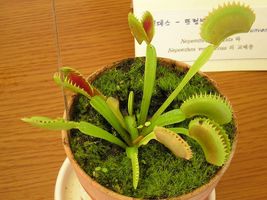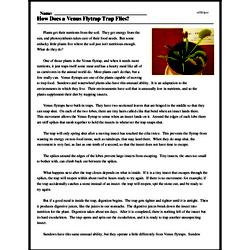How Does a Venus Flytrap Trap Flies?
Plants get their nutrients from the soil. They get energy from the sun, and photosynthesis takes care of their food needs. But some unlucky little plants live where the soil just isn't nutritious enough. What do they do?
One of those plants is the Venus flytrap, and when it needs more nutrients, it just traps itself some meat and has a hearty meal like all of us carnivores in the animal world do. Most plants can't do that, but a few really can. Venus flytraps are one of the plants capable of moving to trap food. Sundews and waterwheel plants also have this unusual ability. It is an adaptation to the environments in which they live. Their environments have soil that is unusually low in nutrients, and so the plants supplement their diet by trapping insects.
Venus flytraps have built-in traps. They have two-sectioned leaves that are hinged in the middle so that they can snap shut. On each of the two lobes, there are tiny hairs called cilia that bend when an insect lands there. This movement allows the Venus flytrap to sense when an insect lands on it. Around the edges of each lobe there are stiff spikes that mesh together to hold the insects in whenever the trap snaps shut.




